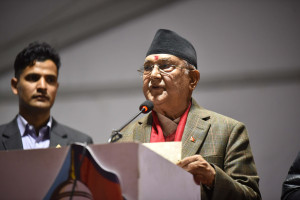Editorial
Continuum of risk
There is little confidence that public health protocols will be maintained in schools.
Schools should be open or re-opened as soon as possible despite Covid-19, the United Nations Children’s Fund chief Henrietta Fore said in a statement last week. She stressed that closing schools must be a last resort measure after all other options have been considered, and assessing the risk of transmission at the local level should be a key determinant in decisions on school operations. The World Health Organisation has also urged policymakers to be guided by a risk-based approach and has released a new checklist of 38 essential actions to support school re-opening and preparations for Covid-19 resurgences or similar crises. Data should drive decisions to re-open schools and the safety measures in place, said Dr Ruediger Krech, the UN health agency’s health promotion director.
Countries worldwide have introduced stricter public health measures and even shut schools to curb infections amid fears of the new infectious variants. But what unfolds in Nepal amid the pandemic is a shocker. Restrictions or any measures to reduce transmission have long been lifted or openly flouted, be it people attending political protests or packed nightclubs. Worse, fewer tests are being conducted; and across the country, schools and colleges which were closed since March 2020 to contain the spread of Covid-19 have now resumed in-person classes, including in the Kathmandu Valley, which, on Sunday, reported 66.54 percent of new infections as per the Ministry of Health and Population.
Opening schools is a worrisome issue for everyone because there is no clear evidence regarding children’s role in transmitting the coronavirus and the extent to which transmission occurs in schools. There is also increasing evidence that suggests that children attending school can catch and transmit Covid-19, and play an important role in community transmission. Given our situation, epidemiologists and infectious disease doctors say there is a significant risk in re-opening schools. If precautionary measures and public health protocols fail to be implemented, it could easily lead to the transmission of the virus among many families.
Recent research has found that once infected, children aged two to 16 years are twice as likely to infect household contacts as people over seventeen. School children and young adults have also experienced a much faster rise in infections than other age groups in the second wave. The government must acknowledge evolving knowledge on the coronavirus and understand and assess the risks accordingly before coming into any decisions that impact our lives. It should stop acting as if we have successfully eradicated the virus from the communities and monitor the implementation of precautionary measures and public health protocols because the situation is far from over until we are all vaccinated. If the government needs a nudge, children can’t get the Covid-19 vaccine yet as they have only been authorised for use in people aged 16 and older.
As hundreds of thousands of students and teachers congregated in classrooms and playgrounds, the Health Ministry on Monday released a statement confirming the new infectious variant of the coronavirus in three returnees from the United Kingdom. The statement warns that precautionary measures and public health protocols are essential unless a vaccine is available in the country.
It’s cold. Our classrooms are small and crowded, and they lack ventilation. Hygiene measures have always been questionable, and there is little confidence that public health protocols will be maintained in schools. Statements will not prevent new infections or deaths. Only meaningful actions based on scientific data and accurate assessment of our risks can break the transmission chain. This point cannot be overstressed.




 11.12°C Kathmandu
11.12°C Kathmandu














